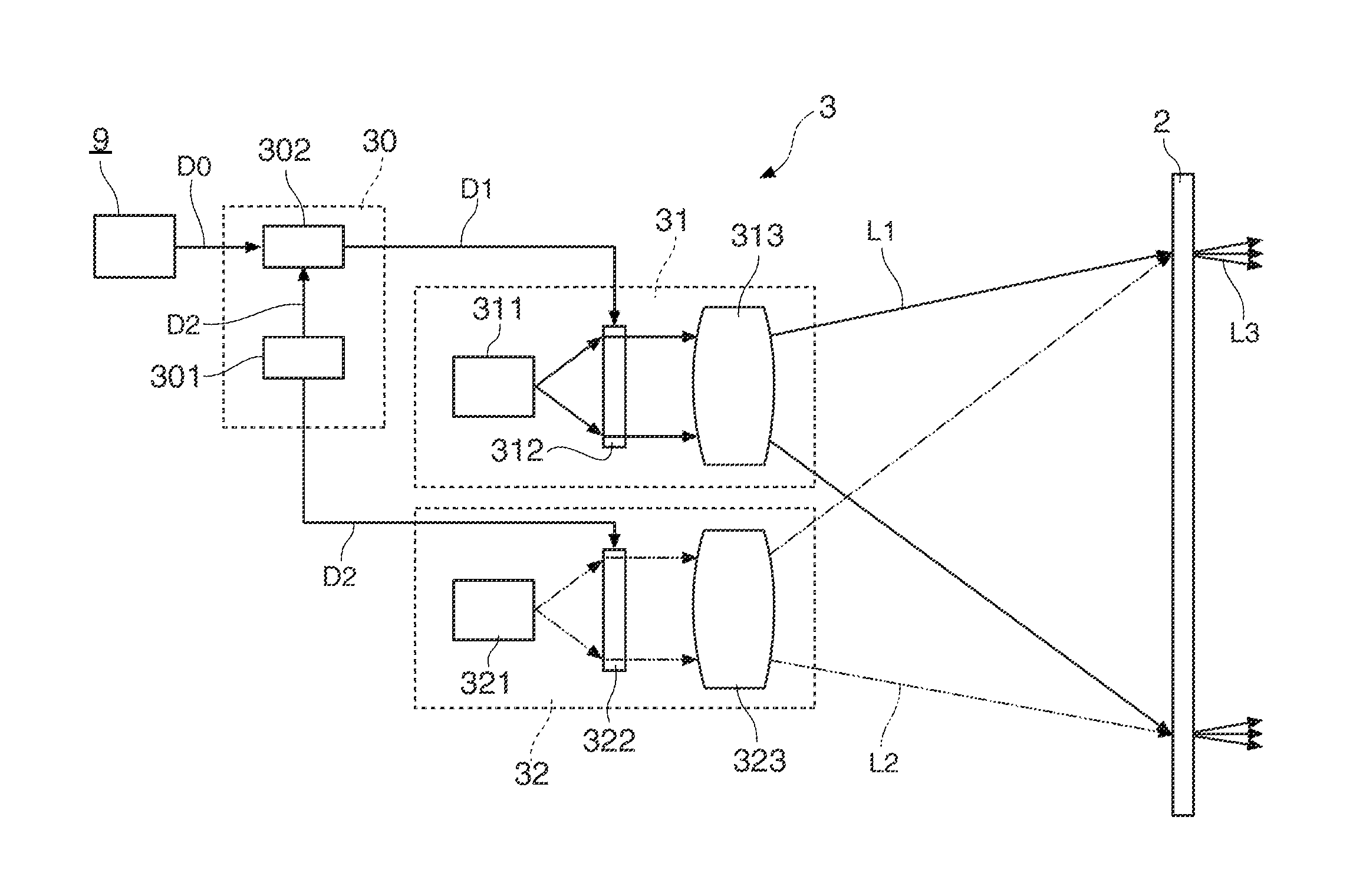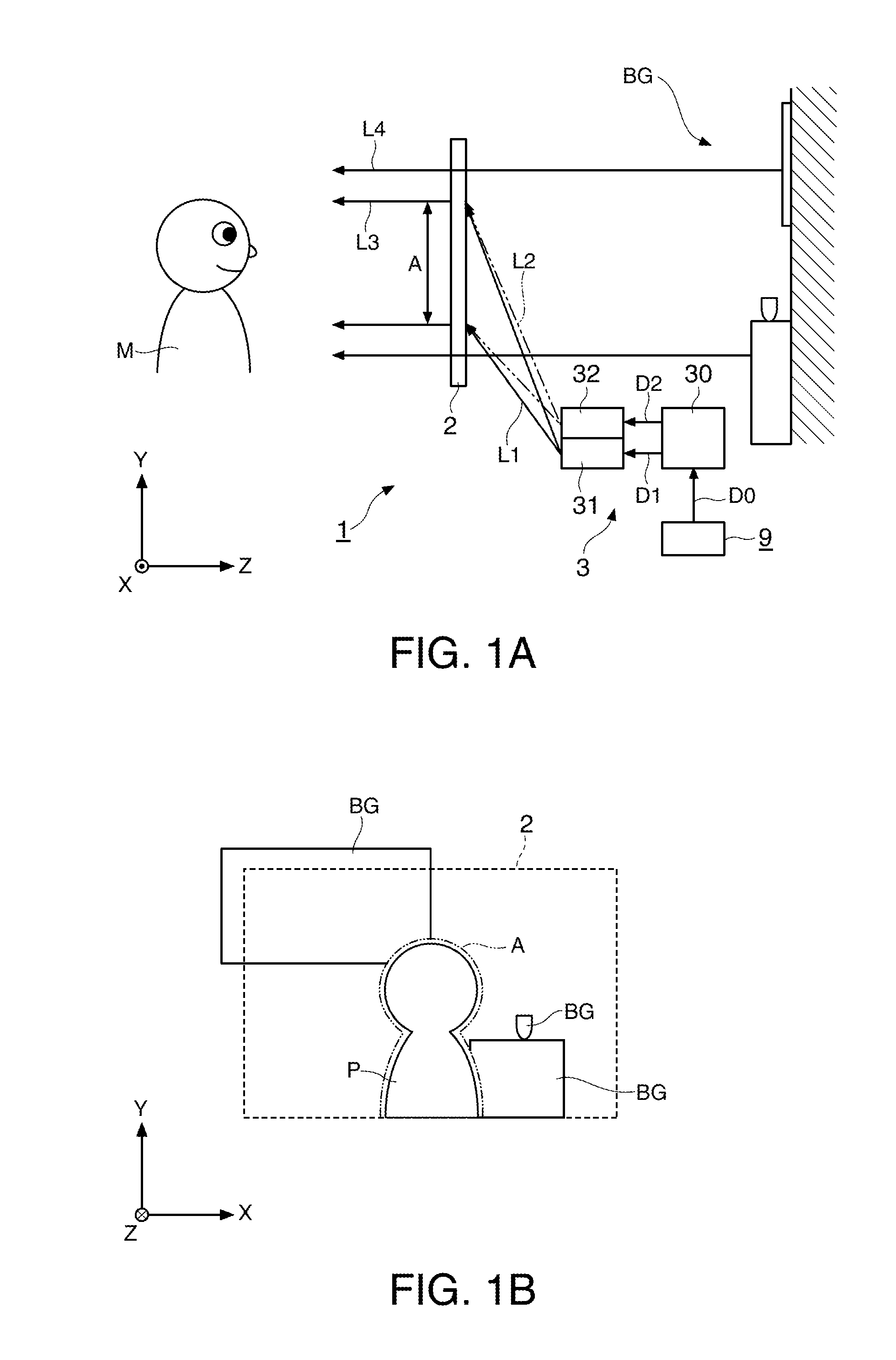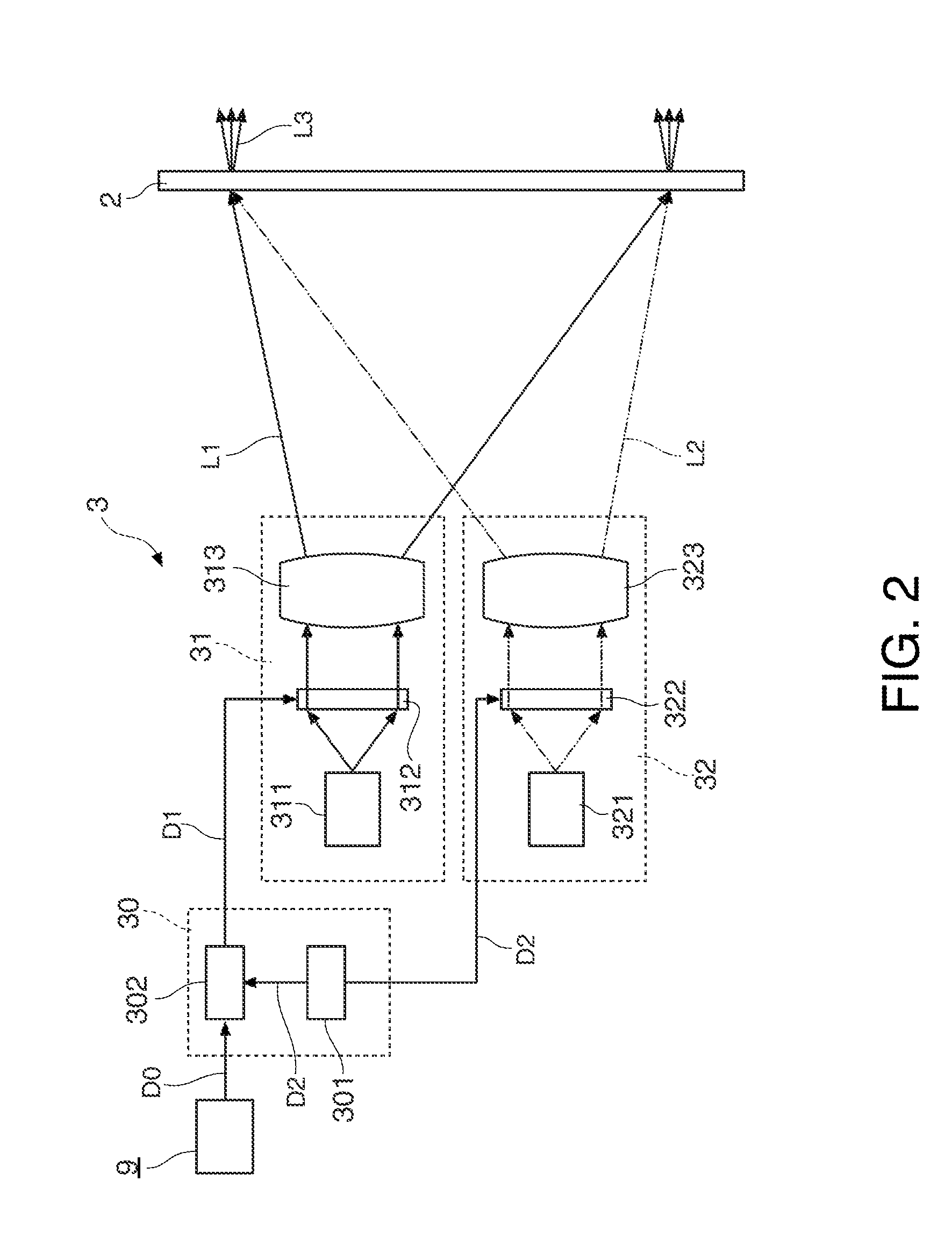Display system, screen and projector
- Summary
- Abstract
- Description
- Claims
- Application Information
AI Technical Summary
Benefits of technology
Problems solved by technology
Method used
Image
Examples
first embodiment
[0056]FIG. 1A is a schematic view showing a schematic structure of a display system 1 of a first embodiment, and FIG. 1B is a view showing a use example of the display system 1. As shown in FIGS. 1A and 1B, the display system 1 includes a screen 2 and a projector 3. The projector 3 includes a data supply section 30, an image projection system 31 and an invisible light projection system 32. The screen 2 is the screen to which the invention is applied, and the projector 3 is the projector to which the invention is applied.
[0057]In an XYZ orthogonal coordinate system shown in FIGS. 1A and 1B, directions along the principal plane of the screen 2 are an X direction and a Y direction, and a normal direction of the principal plane of the screen 2 is a Z direction. The X direction and the Z direction are, for example, the horizontal direction, and the Y direction is, for example, the vertical direction.
[0058]The display system 1 of the first embodiment roughly operates as described below. O...
second embodiment
[0093]Next, a display system of a second embodiment will be described with reference to FIGS. 5A and 5B.
[0094]FIG. 5A is a schematic view showing a schematic structure of a display system 1B of the second embodiment, and FIG. 5B is an enlarged sectional view showing a structure of the screen 2B. The display system 1B is different from the first embodiment in that an image projection system 31B is constructed as an apparatus independent of an invisible light projection system 32.
[0095]The image projection system 31B projects an image light L1 onto a screen 2B based on image data D2 supplied from a signal source 9. The image projection system 31B is constructed of, for example, a projection-type or scanning-type projector. The image projection system 31B can be constructed of a normal projector.
[0096]The invisible light projection system 32 projects an address light L2 onto the screen 2B based on range data D1 supplied from the signal source 9. The invisible light projection system 32...
third embodiment
[0100]Next, a display system of a third embodiment will be described. The third embodiment is different from the first and the second embodiments in that a screen includes a light absorption layer to absorb a complementary light which has a complementary color in subtractive color mixing with respect to a color light absorbed in a photoconductive layer.
[0101]FIG. 6A is an enlarged sectional view showing a structure of a screen 2C in the display system of the third embodiment, and FIG. 6B is a graph showing light absorption spectra of a photoconductive layer and a light absorption layer. The horizontal axis of the graph shown in FIG. 6B indicates the wavelength, and the vertical axis indicates the transmittance.
[0102]As shown in FIG. 6A, the screen 2C includes a light absorption layer 27. The light absorption layer 27 is formed on the surface of a transparent substrate 21 on the opposite side to a transparent electrode 23. The light absorption layer 27 is constructed of, for example,...
PUM
| Property | Measurement | Unit |
|---|---|---|
| Color | aaaaa | aaaaa |
| Area | aaaaa | aaaaa |
| Photoconductivity | aaaaa | aaaaa |
Abstract
Description
Claims
Application Information
 Login to View More
Login to View More - Generate Ideas
- Intellectual Property
- Life Sciences
- Materials
- Tech Scout
- Unparalleled Data Quality
- Higher Quality Content
- 60% Fewer Hallucinations
Browse by: Latest US Patents, China's latest patents, Technical Efficacy Thesaurus, Application Domain, Technology Topic, Popular Technical Reports.
© 2025 PatSnap. All rights reserved.Legal|Privacy policy|Modern Slavery Act Transparency Statement|Sitemap|About US| Contact US: help@patsnap.com



